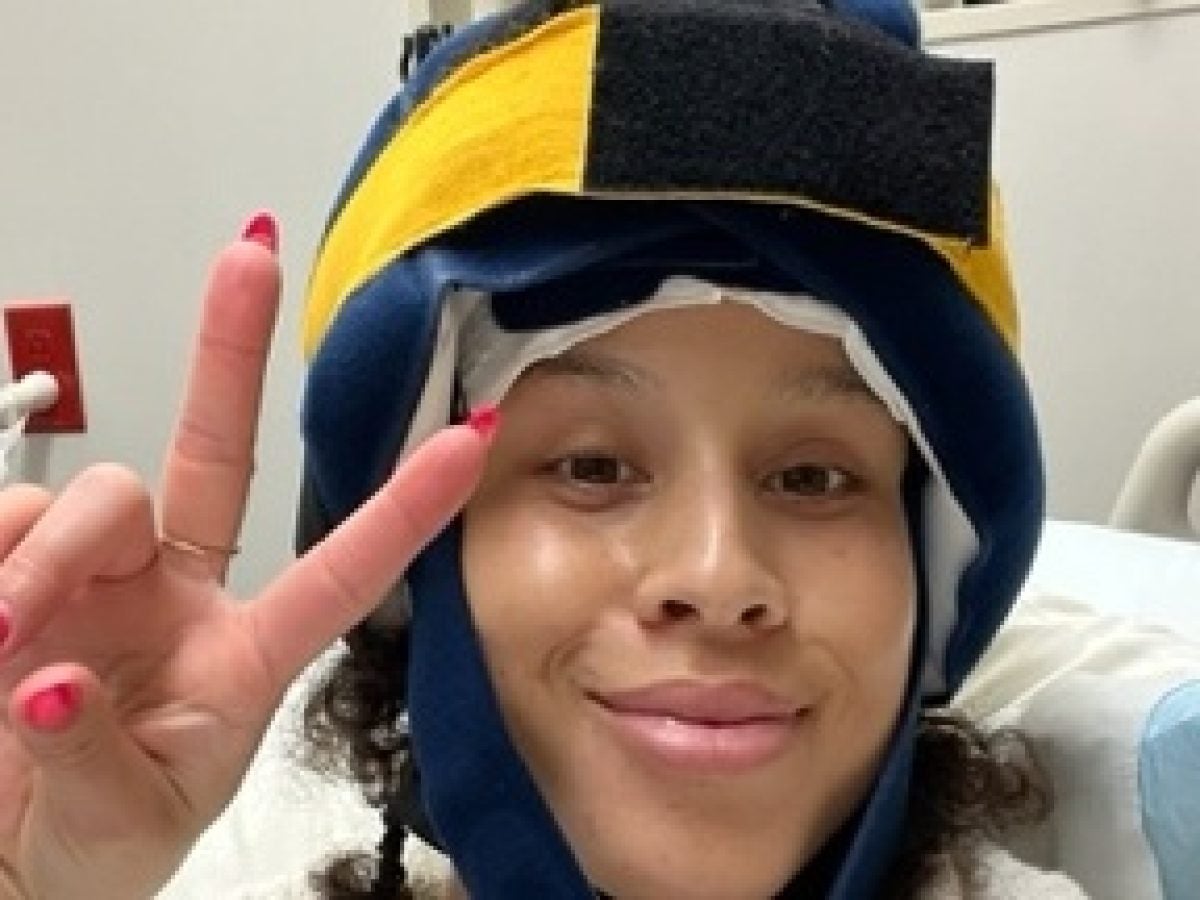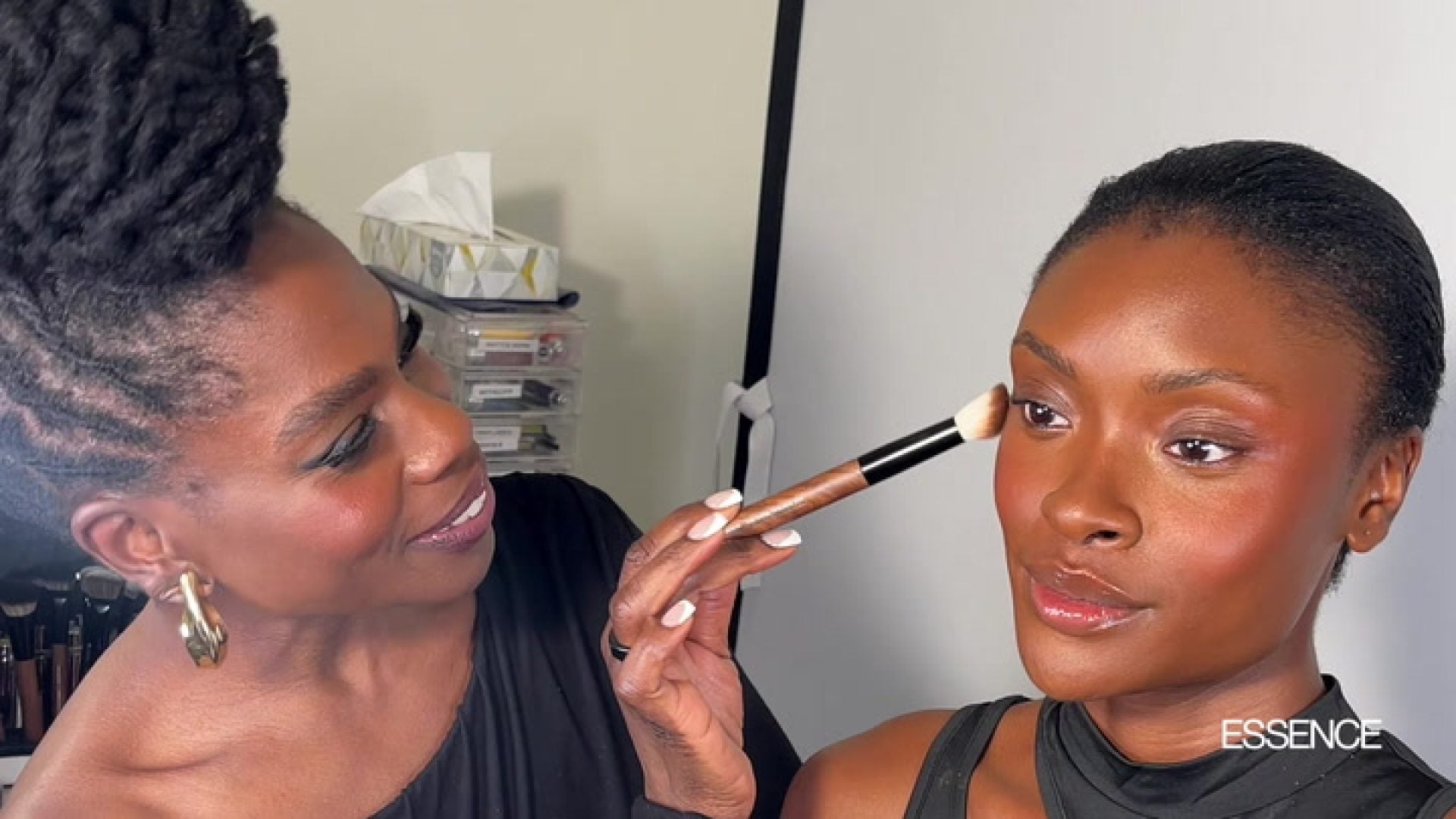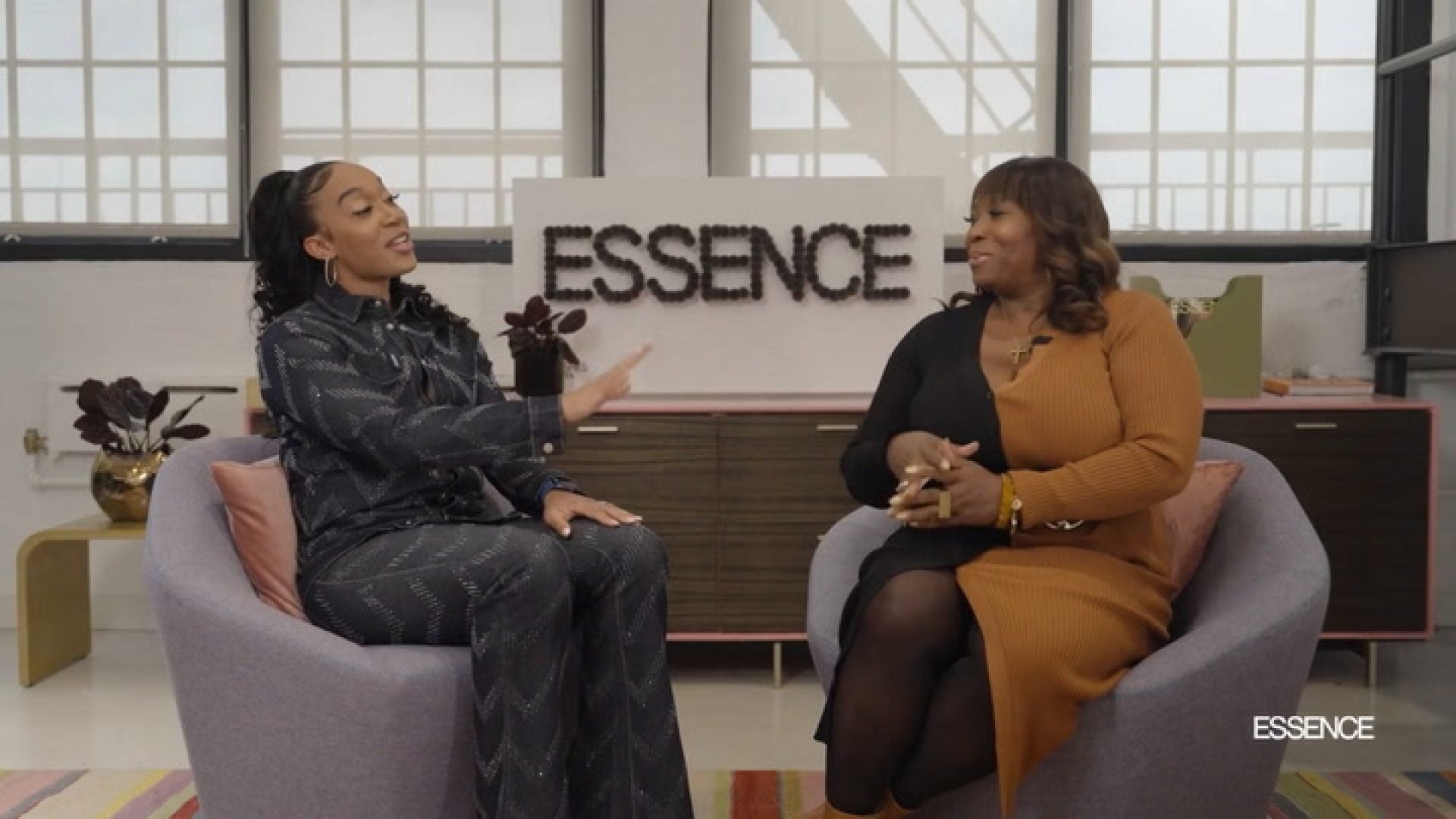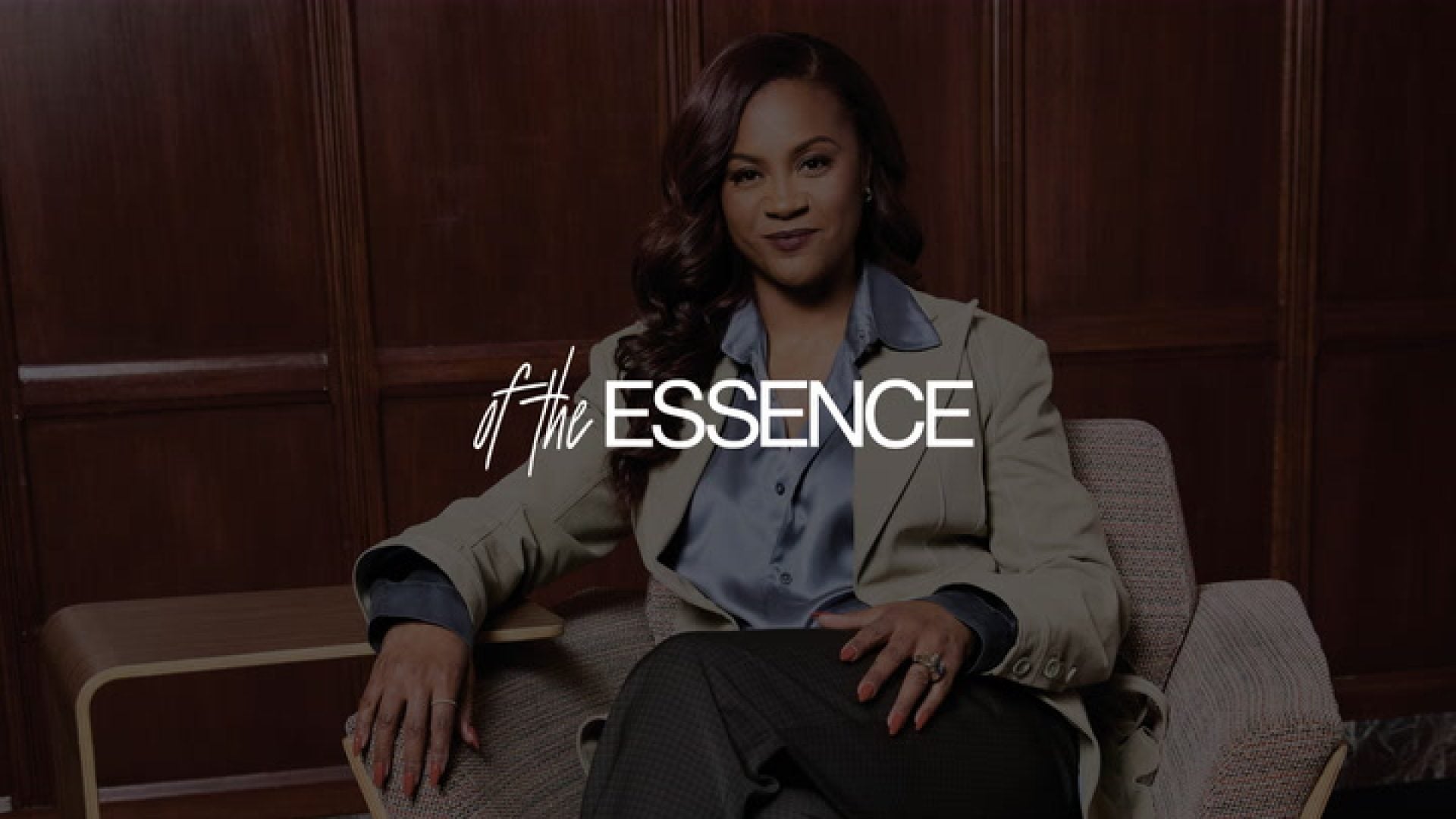
When Amanda Butler was diagnosed with breast cancer at age 32, the prospect of chemotherapy was daunting. “That was the last thing I wanted to do. I was like I don’t want to lose my hair,” Butler tells ESSENCE. After noticing a lump on her breast in July 2022, Butler was prompted to get a mammogram and ultrasound done.
Unfortunately, the cancer had already progressed to stage two, meaning she would need to undergo chemotherapy, a double mastectomy, and radiation. “I was distraught,” says Butler, whose work as a digital fitness trainer for various brands requires her to be on camera. Beyond the glaring health implications of her diagnoses, she was also overwhelmed by what this would mean for how she presents to the world, especially as it relates to the loss of her hair. “Cancer already takes enough. I’m already going to lose my breasts. I’m going to lose my physical strength and my current reality of what I had built over the last few years. It felt very much like the carpet was being pulled out from underneath me,” says Butler.
At the suggestion of a friend, though, Butler soon learned about cold caps, which help to minimize hair loss. The cold caps offered her a feeling of control in a situation that was largely out of her hands. “I thought, if I could just not look like I have cancer and still live my life while I’m getting treatment and control this one aspect of my life then maybe it would be like the cancer wasn’t really happening,” says Butler.
Chemotherapy, not to be confused with radiation, works by targeting rapidly dividing cells, explains Dr. Jamie E. Terry, M.D., MHCE, FACS of Texas Oncology in Houston. Unfortunately, non-malignant cells such as the ones that make up the hair follicle are also impacted by these treatments, leading to the thinning and loss of hair or “chemotherapy alopecia,” explains Dr.Terry. “The hair will grow back; it just might not grow back as thick or the same color or the same texture as before. The emotional impact of enduring that alopecia is the focus of the cold cap,” says Dr. Terry.
Created in 1998, cold caps work by cooling the scalp and constricting blood flow to the root, with the hopes of limiting the amount of chemotherapy actives that reach the hair. “You put these liners on your head and your ears, and then a cap over your head to protect your skin. And then you put the cold cap on and it has to be changed out about every 20 minutes,” says Dionne Phillips, a pioneer lash artist and breast cancer survivor. She first heard about cold caps long before receiving her own diagnosis. “Prior to breast cancer, I was also helping other cancer patients,” says Phillips, explaining she would offer lash extensions for women who were experiencing lash loss due to chemo. Her knowledge came in handy when she received her own diagnosis of Invasive Ductal Carcinoma in her left breast in January of 2022. She was 54.
“When I got diagnosed I knew I was going to get a cold cap,” says Phillips. She also notes that it was her white clients, specifically, that shared information regarding cold caps. “It wasn’t a resource that a lot of [Black women] were aware of,” says Phillips.
Although FDA-approved, a Georgetown MedStar study found that cold caps were less “efficacious in preventing alopecia in Black women.” This is due to “differences in hair thickness, hair volume, and limitations of cooling cap design.” This discrepancy points to larger gaps in representation for Black women– a common issue within the healthcare system.
Dr. Terry says this is because, “when they were developing the technology, they did not have enough minority women in the focus groups.” Both Phillips and Butler felt the impacts of this medical blindspot in real time. After an unsuccessful first round with the cold cap– that resulted in “gnarly matting”– Butler realized she would have to approach the process differently due to her hair texture.
“I realized, I can’t just do it like a person with non-ethnic hair,” says Butler. “If your scalp is not exposed, then it won’t get cold enough to keep your hair.” She then began to twist her hair to better expose her scalp to the cooling effects but still saw minimal results. “At the end of the day, I still lost about 80% of my hair, which was really unfortunate,” she says.
Not only this, as Dr. Terry mentions, the tension from cornrowing or twisting the hair can also put stress on the follicle. “That, even combined with the cool cap, would not supersede the collective damage of the stress and the chemotherapy,” says Dr.Terry. Around 66% of cold cap users keep 55% or more of their hair.
But, retention rates aside, what the usage of these caps offers these women in autonomy is worth acknowledging, says Dr. Terry. “A woman’s hair is her crown. So the emotional impacts of hair loss and hair thinning is a big component of successful or unsuccessful survivorship,” says Dr.Terry. This is especially pertinent amongst Black women– who are often held to harsher standards regarding the appearance of their hair.

Furthermore, societal perceptions of cancer patients can make an already debasing situation feel especially ostracizing. “I wanted to do cancer my way,” says Phillips, who referred to her commitment to not look like what she was going through as a part of her “cancer couture,” approach to treatment. “I don’t want to look sick. I don’t want people to come to me apologizing,” says Phillips. She ultimately had to shave her head due to a lack of success with the cold caps. But she still managed to keep her original mindset throughout her treatment. “My whole mantra was keeping my vibrations up the whole time so I could heal. You’re fighting for your life, you’re scared and you don’t need all these extras,” adds Phillips.
Fears surrounding chemo-related hair loss can also have professional impacts. As Dr. Terry explains, she has had patients who have tried to delay treatment in an effort to reach career milestones. “I have had women in my office say, ‘I’m up for a promotion. Can I delay my treatment by a month?’ And it’s because of the way they believe they are perceived — if there’s any sign of weakness it will be used against them,” says Dr. Terry. Ultimately, the use of the cold caps, while not a 100% fix, gives women some of their time and power back.
“It’s kind of nice to have that hope of being able to still maintain some sense of normalcy in my life. So I love the option,” says Butler, of course acknowledging the execution could use some work regarding affordability and inclusivity. These caps are not covered by insurance and typically range between $380 to $450 per month.
Beyond the financial barrier, a cap better suited to coarser, thicker hair textures would offer more equitable support for those fighting the disease, says Dr. Terry, adding that it is crucial Black women are afforded external support during and after treatment. “I try to encourage women to understand that the goal of care is to cure them of breast cancer, but it is also to return them to the life that they envisioned for themselves,” says Dr. Terry.












